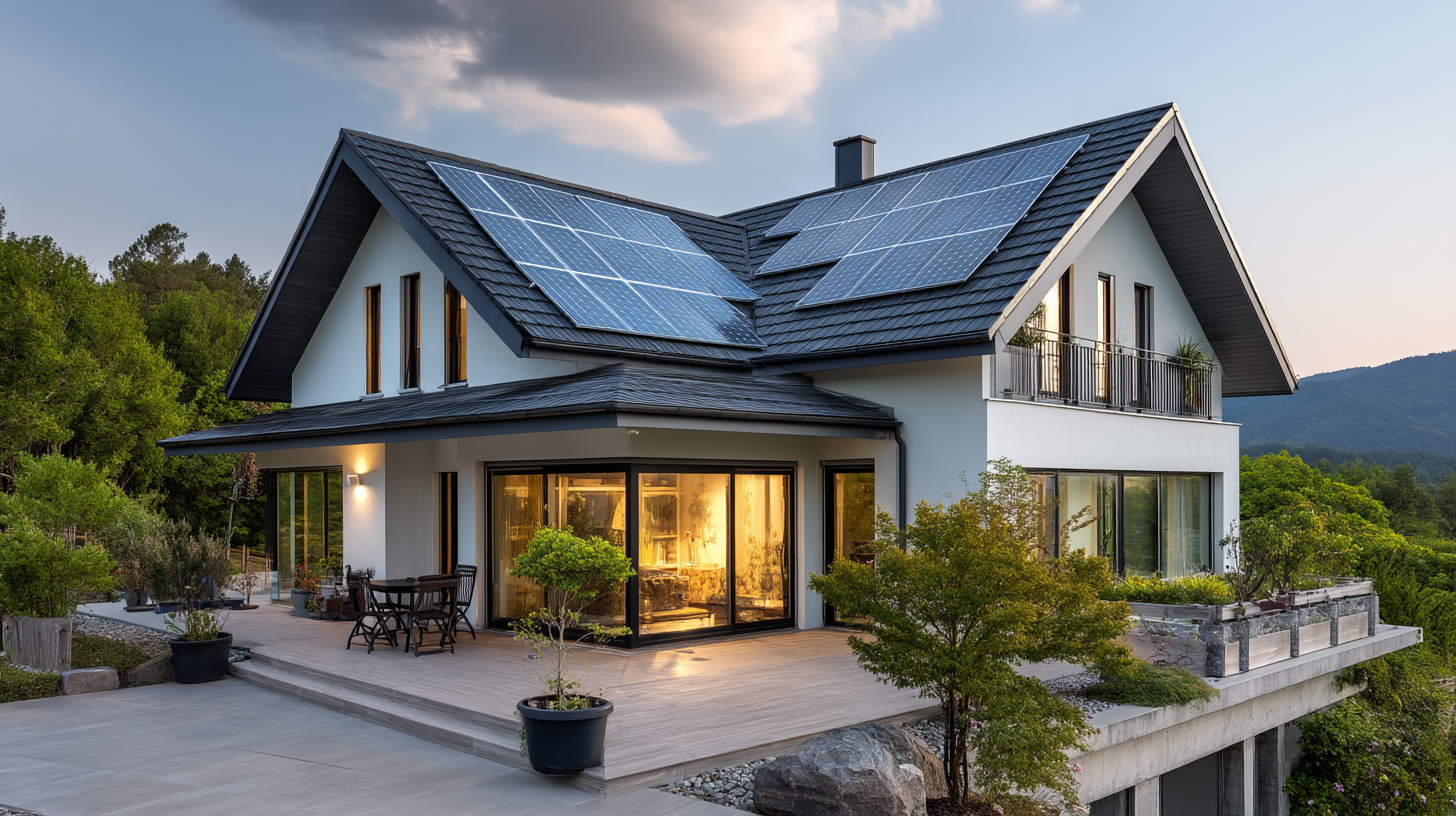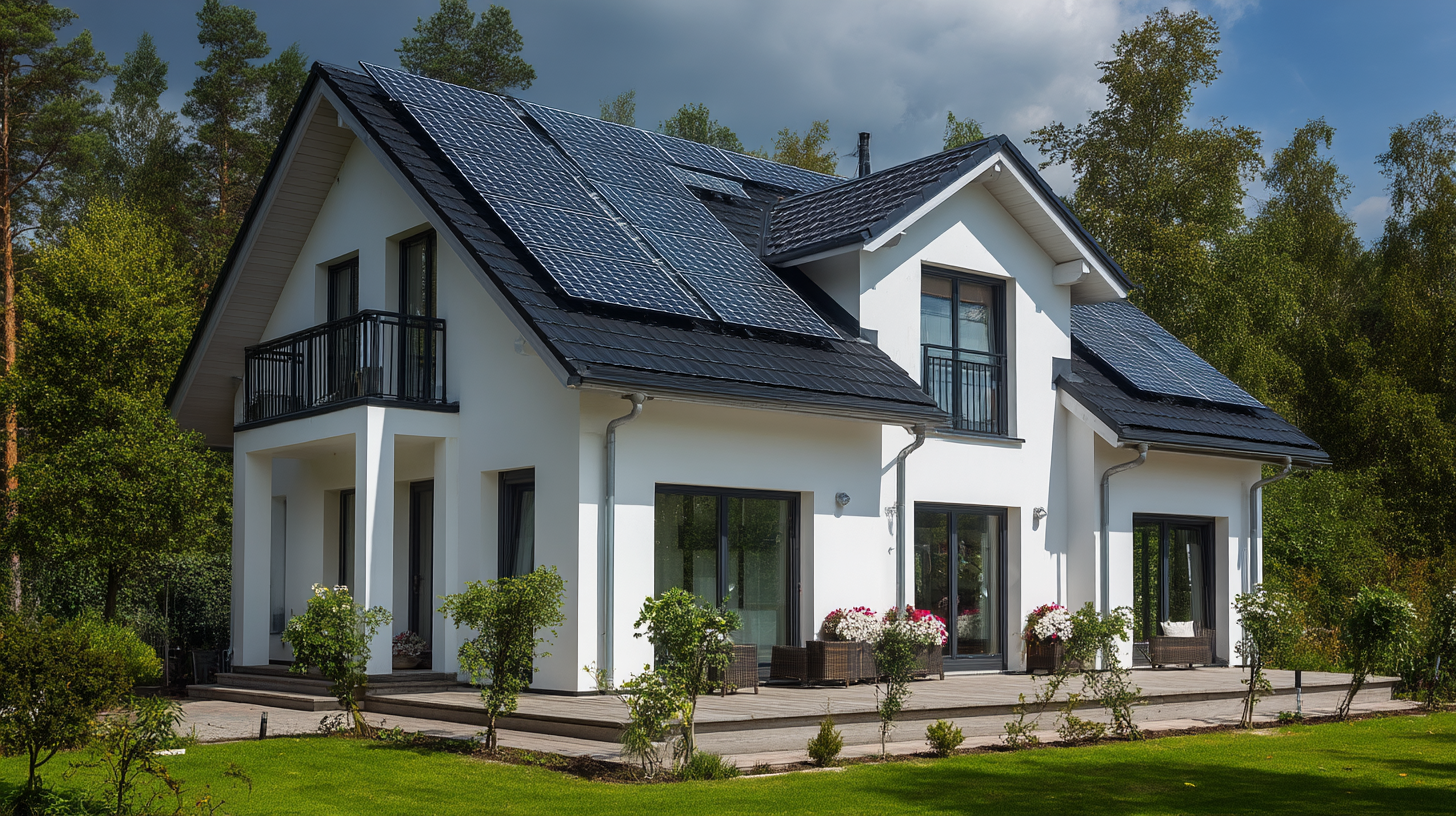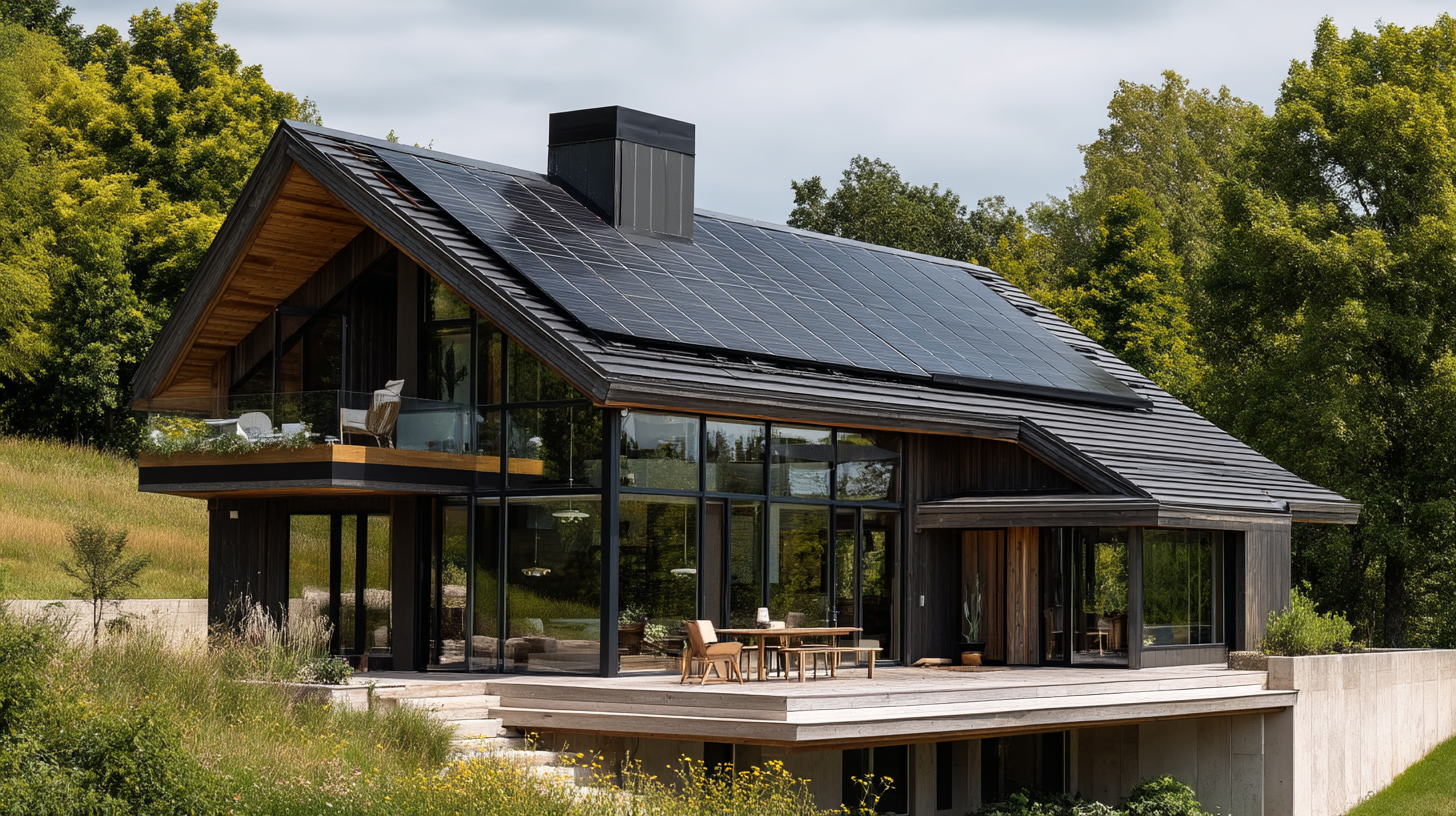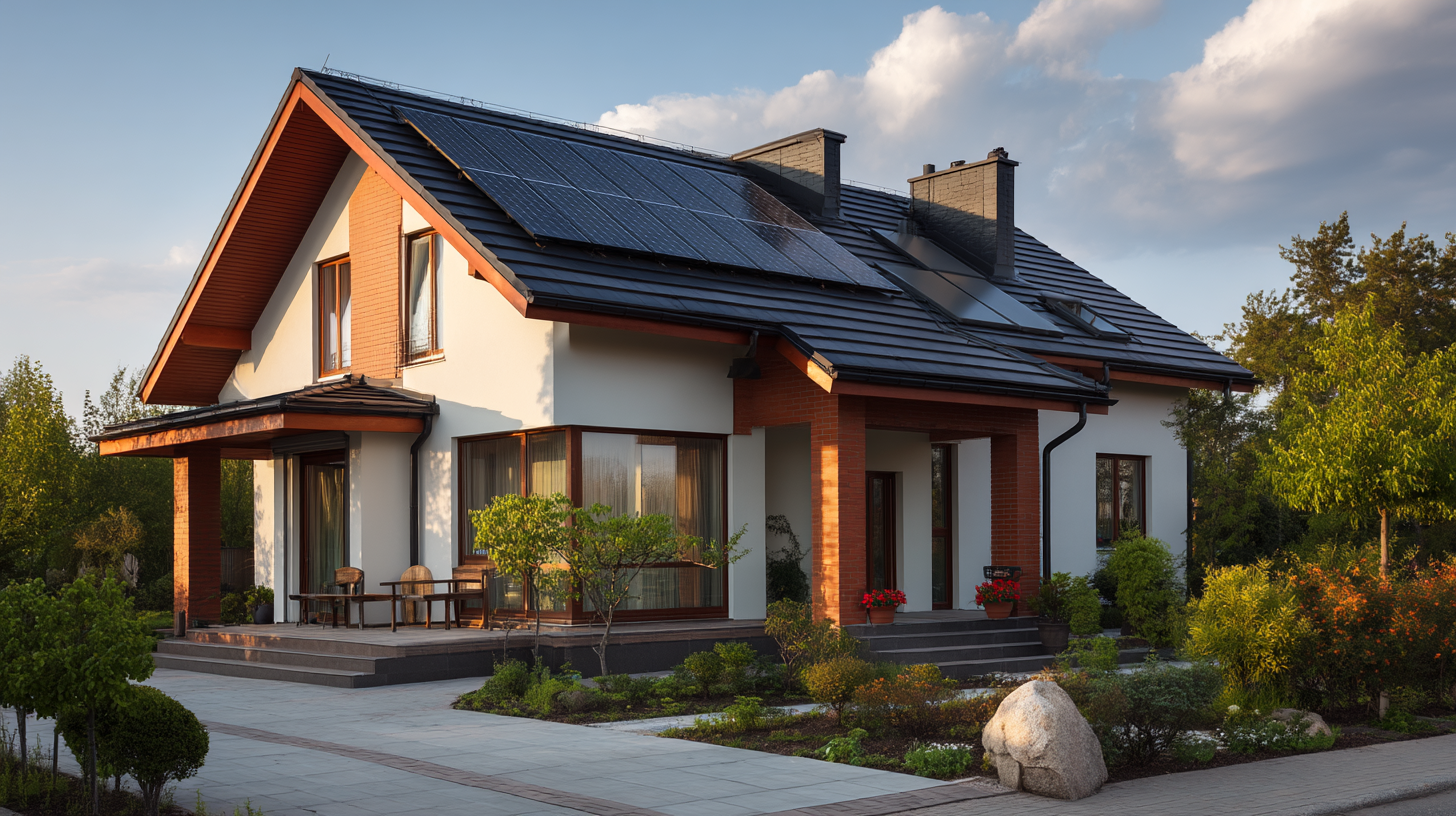Partnered with #1 ADU Builders
Contact Golden State
Drop us a line! We look forward to discussing your next project with you!
Cut the chase! Schedule a face-to-face virtual meeting with us today to dive into your project's next steps.
For our returning clients, experience our streamlined, contact-free project proposal process. Simply fill out our short project questionnaire, and we'll deliver your project proposal within 72 hours.
Contact Us:
Follow Us:

- Golden State Design & Engineering
- Comment 0
What Is Sustainable Housing Design?
Sustainable housing design is a comprehensive approach to creating homes and residential buildings that minimize environmental impact, reduce energy consumption, and support healthy living environments. In a world facing climate change, rising utility bills, and resource constraints, sustainable housing is no longer optional, it is a necessity. This blog explains what sustainable housing design means, explores key sustainable design principles, and shows how GSDE integrates sustainability and energy efficiency into custom homes, ADUs, multi‑family developments, and affordable housing projects in California through advanced energy and environmental design strategies.
The Importance of Sustainability and Energy Efficiency in Housing
When people ask, “what is sustainable housing design,” one essential answer is its focus on energy efficiency and eco friendly solutions. Energy efficient systems, energy efficient lighting, and energy efficient appliances all contribute to lowering energy use and reducing greenhouse gas emissions. By reducing energy consumption, sustainable homes help cut carbon emissions and shrink the carbon footprint of a building. Moreover, sustainable practices extend beyond just energy use to water conservation, building materials selection, indoor air quality, and resilience to climate change and environmental challenges.
Reducing energy consumption not only lowers energy bills but also delivers cost savings over the life of a home. In addition, using renewable energy sources such as solar panels or wind power helps generate electricity onsite and further reduces dependence on fossil fuels. Beyond energy, sustainable housing design addresses water conservation, stormwater management, recycled and locally sourced materials, and indoor environmental quality. All of this contributes to lower environmental impact and supports a sustainable future.
Core Principles of Sustainable House Design

To turn the concept of sustainable housing into reality, designers rely on proven sustainable design principles. Below are key components and features that every sustainable home should address.
Holistic Approach and Integrated Design
A holistic approach means every system, structure, envelope, mechanical, plumbing, site layout, works together. Integrated energy and environmental design is critical. Early collaboration among architects, structural and civil engineers, landscapers, and energy modelers ensures that decisions reinforce each other. For example, optimal orientation of a building site impacts solar gain, shading, and daylighting, which in turn influence cooling costs, natural light, and heating loads.
Envelope Performance, Insulation, and Efficient Windows
A sustainable house design depends on a high‑performance building envelope. Proper insulation, air sealing, and energy efficient windows are key features to reduce energy use. Low U‑factor glazing, insulated walls, and thermal breaks in the structure help maintain indoor thermal comfort while decreasing heating and cooling loads. These strategies reduce energy consumption and cooling costs, making the home more efficient overall.
Energy Efficient Systems, Appliances, and Lighting
To further reduce energy use, sustainable homes deploy energy efficient systems, HVAC, ventilation, heat recovery, and controls, along with energy efficient appliances and energy efficient lighting. LED lighting, ENERGY STAR appliances, efficient heat pump systems, and smart controls ensure that the energy use is minimized. These systems are essential for achieving energy reduction and cost savings.
Onsite Renewable Energy: Solar Panels and Beyond
Integrating solar panels or photovoltaic panels is one of the most visible elements of sustainable housing design. Solar panels generate electricity onsite, reduce reliance on grid power, and lower greenhouse gas emissions. When combined with battery storage or smart inverters, these renewable energy sources help homeowners save money and reach net-zero energy goals. In some designs, wind power may also complement solar installations where conditions allow.
Water Conservation, Rainwater Harvesting, and Stormwater Management

Sustainable housing design must conserve water. Low flow fixtures, drought‑tolerant landscaping, and rainwater harvesting systems are fundamental. Harvested rainwater can be reused for irrigation or nonpotable uses, reducing demand on municipal supplies. Stormwater management strategies, such as permeable surfaces and bioswales, help reduce stormwater runoff and retain water on site. These practices help conserve natural resources and mitigate flood risks.
Sustainable Materials, Recycled Materials, and Low Embodied Energy
The building materials you choose matter. Sustainable materials, such as reclaimed wood, recycled materials, low‑carbon concrete, and locally sourced materials, help lower embodied energy and carbon emissions. Recycled wood, reclaimed finishes, and responsibly harvested materials support sustainable building practices. Designing for disassembly, adaptability, and reuse ensures a long life with minimal waste.
Indoor Environmental Quality and Indoor Air Quality
Healthy living environments depend on indoor environmental quality. Improve indoor air quality by selecting low‑VOC finishes, using proper ventilation, controlling humidity, and ensuring air filtration. Natural light, daylight, and views of nature further enhance comfort and occupant well-being. These sustainable practices address both physical health and psychological benefit.
Resilience, Adaptation, and Climate Change Preparedness
Sustainable houses must be resilient. With climate change increasing risks like heat waves, wildfires, and power outages, sustainable housing design includes passive cooling strategies, shading, backup power, durable materials, and climate adaptation measures. These features increase long‑term durability and protect occupants and assets.
Emerging Trends in Sustainable Housing

As we move through 2025 and beyond, several trends are reshaping sustainable architecture and sustainable housing design.
Intelligent Modeling, AI Tools, and Digital Twins
New technologies allow designers to simulate energy consumption and performance in real time. AI tools and digital twins help optimize orientation, window placement, HVAC sizing, and solar output before construction. This leads to better outcomes in energy reduction and environmental design.
Net‑Zero, Regenerative, and Living Homes
More projects aim not just to reduce energy use, but to produce excess energy or actively regenerate ecosystems. Regenerative design includes carbon sequestration, soil health, native landscaping, and habitat restoration. Sustainable homes that go beyond net-zero become positive contributors to environment and community well being.
Biophilic Architecture and Wellness Design
Design that connects people to nature, through natural light, greenery, indoor gardens, and water features, is becoming mainstream. These features support mental health, community well being, and occupant satisfaction. Incorporating biophilic strategies enhances the appeal of sustainable homes.
Hybrid Systems and Microgrids
Pairing solar with battery storage, smart inverters, microgrids, and demand response systems gives homeowners more control over energy use and grid interaction. These systems help reduce energy consumption and manage peak loads.
Affordable Housing Developments with Sustainability
Sustainable design is expanding into affordable housing. By adopting energy efficient systems, high-performance envelopes, shared renewable energy, and sustainable building practices, even low-income housing can lower utility bills and reduce environmental impact. This approach aligns community benefit with cost savings.
Sustainable Housing in California: Challenges and Opportunities
California is a crucible for sustainable housing design. Energy codes like Title 24, CALGreen standards, and local reach codes push toward all-electric or net-zero construction. Additionally, incentives, rebates, and financing programs help offset initial cost premiums.
However, navigating permitting, cost constraints, supply chain limitations, and performance gaps remains challenging. Many clients worry about higher upfront cost. But when you factor in life cycle cost savings, lower utility bills, carbon reduction, and increased market value, sustainable housing becomes a financially wise investment.
GSDE’s team helps homeowners, developers, and communities understand incentives, manage permitting, and integrate sustainable design into every phase. We bring structural engineering, civil engineering, architectural design, land surveying, and permitting into one unified process.
Addressing Common Misconceptions
Some common objections to sustainable housing include notions that it is too expensive, only for eco‑enthusiasts, or that sustainable materials lack durability. In reality, many sustainable features deliver cost savings, broader market appeal, and performance equal or superior to conventional alternatives. Sustainable homes are now mainstream, not niche.
How GSDE Designs Sustainable Homes, Step by Step

Phase 1: Feasibility, Site Analysis, and Sustainable Strategy
We begin by assessing your building site, orientation, climate, soil, and local codes. We identify key features like passive solar access, shading, existing vegetation, and stormwater management opportunities.
Phase 2: Conceptual & Detailed Sustainable Design
We integrate sustainable design principles into floor plans, envelope design, material selection, HVAC and lighting systems. We evaluate scenarios, the cost versus benefit of solar panels, battery backup, efficient windows, rainwater harvesting, and smart systems, to ensure optimal performance and affordability.
Phase 3: Permitting, Engineering, and Construction Support
We coordinate structural, civil, mechanical, and electrical engineering to support sustainable design. We full permit the project with local authorities, ensuring compliance with energy codes, sustainability standards, and green building requirements. During construction, we monitor execution to preserve design intent.
Phase 4: Performance Verification and Post‑Occupancy Monitoring
After construction, we recommend commissioning, performance monitoring, and adjustment to ensure the home meets its energy goals. If needed, our team evaluates system behavior, fine-tunes controls, and offers recommendations for further improvement.
FAQs About Sustainable Housing Design
How much more does sustainable housing cost?
Sustainable features often add 5–10 percent to upfront cost. But these costs are offset through cost savings over time in energy bills, lower maintenance, and incentives.
Can I retrofit my existing home using sustainable practices?
Yes, many sustainable practices, improving insulation, installing energy efficient systems, adding solar panels, and upgrading windows, can retrofit. We can help assess suitability and project scope.
What certifications should I pursue?
LEED, Passive House, WELL, and Energy Star are among them. Each emphasizes different aspects, energy, health, resilience, and we can guide you to choose the right one.
Is sustainable design the same as “green” building?
Sustainable design emphasizes system integration, performance outcomes, lifecycle impacts, and occupant health. “Green” building often focuses more on product‑level choices. Sustainable design is broader and more strategic.
How long does descign and permitting take?
Typical sustainable home projects may take 4–6 months to design and permit, depending on jurisdiction. We work to streamline approvals while preserving sustainability goals.
Final Thoughts
Sustainable housing design is essential for a sustainable future. It means responsibly using resources, cutting energy consumption, improving indoor air quality, managing water, reducing carbon emissions, and adapting to climate change. Using sustainable materials, efficient systems, renewable energy, and holistic design, we can deliver homes that offer cost savings, resilience, comfort, and enduring value.
At GSDE we believe sustainable homes should be the norm, not the exception. Whether you’re planning a custom home in the foothills, an ADU in the city, or an affordable housing development, we’re here to lead you through design, engineering, permitting, and construction. Let’s design together for a greener, healthier future, contact GSDE today to begin your sustainable housing journey.
#NAICS’s:
- 541310 Architectural Services &
- 541330 Engineering Services
DUNS NO:
- 119132267
#SIC’s
- 8712 Architectural Services &
- 8711 Engineering Services
Cage #
- 9R4L5
#UNSPSC’s:
- 81101500, 81101502, 81101505, 81101508, 81101526, 81101533, 81101522

